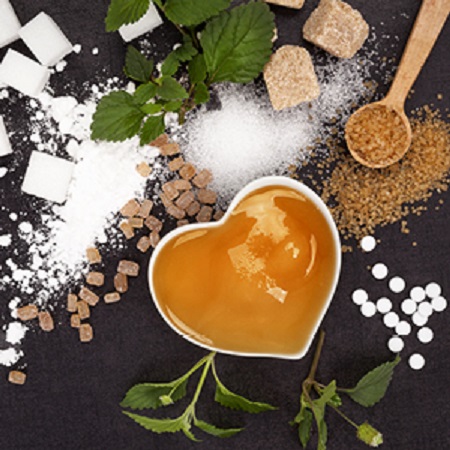
Wishing one another “a sweet New Year” is a familiar phrase that expresses our joy at High Holiday time. Now, thanks to a new cookbook published by the Hadassah Medical Organization’s Linda Joy Pollin Cardiovascular Wellness Center for Women, we can all make better choices as to exactly which sweetener is best for us.
Here’s what the cookbook, The Praiseworthy Kitchen: Simple, Healthy and Tasty Recipes, tells us about the wide variety of sweeteners on the market today.
White sugar: This sweetener is sometimes called table sugar, granulated sugar, or sucrose. White sugar has been highly processed to a refined state, which gives it its final taste and shape.
Brown sugar and demerara sugar: Though less highly processed than white sugar, these sugars are also processed. It is important to know that in many cases sweeteners with these names are really just colored white sugar. Real brown and demerara sugars contain minuscule amounts of calcium and potassium. These sugars are much more expensive than white sugar and may not be worth the cost.
Natural sweeteners: This category includes bee honey, date honey, and real maple syrup. These sweeteners are sold nearly in their natural state and contain anti-oxidants, vitamins, and minerals. But they are mostly a less processed simple sugar, something that should be consumed in limited quantities, whether natural or processed.
How then should we consume sugar? Researchers at the Pollin Center would say, in moderation.
The level of sweetness that one enjoys is habit-based. By gradually lowering the level of sweetness in foods, you can learn to enjoy a lesser level of sweet. In most recipes, you can cut the amount of sugar and still have a tasty outcome. The perfect outcome can be achieved by trial and error. When the recipe calls for one and a half cups of sugar, try substituting one cup. Test the results. Maybe next time you will lower the amount of sugar further. Or maybe not. That’s okay, too.
